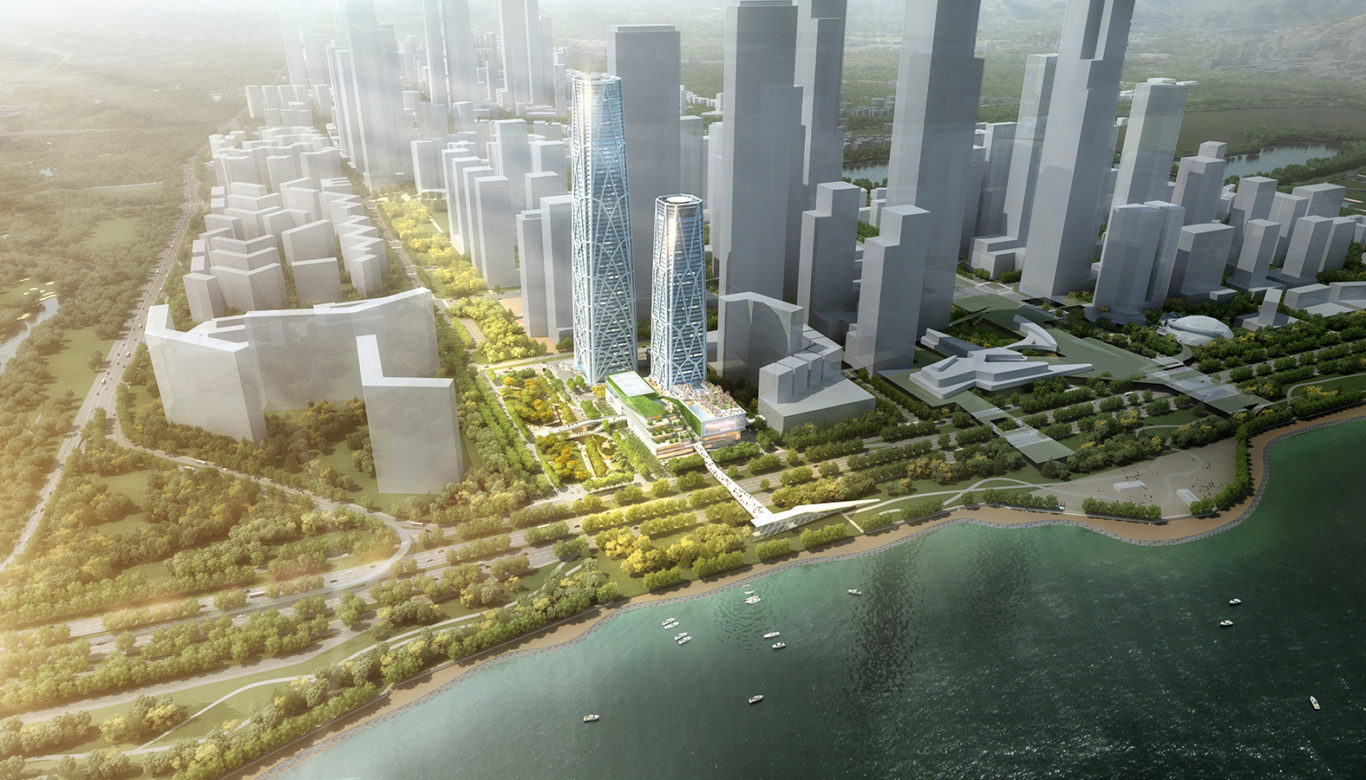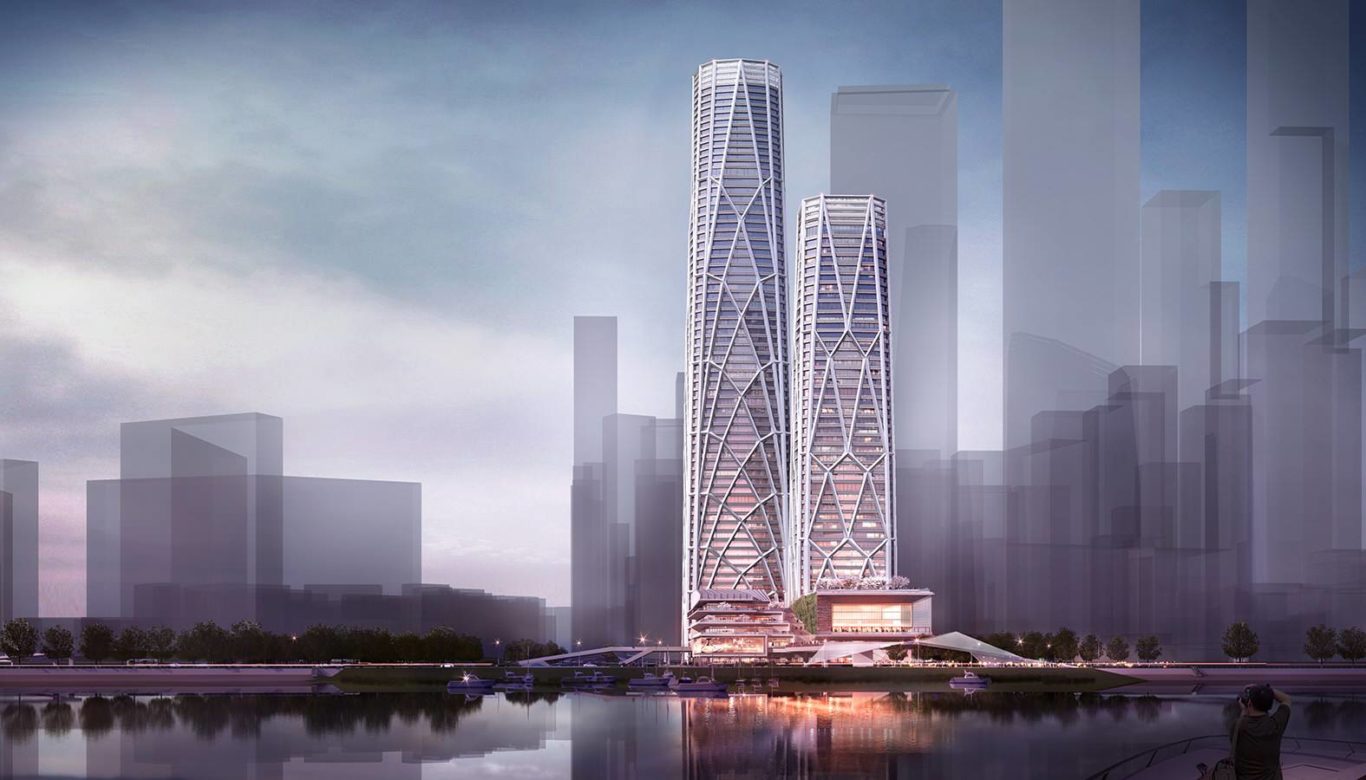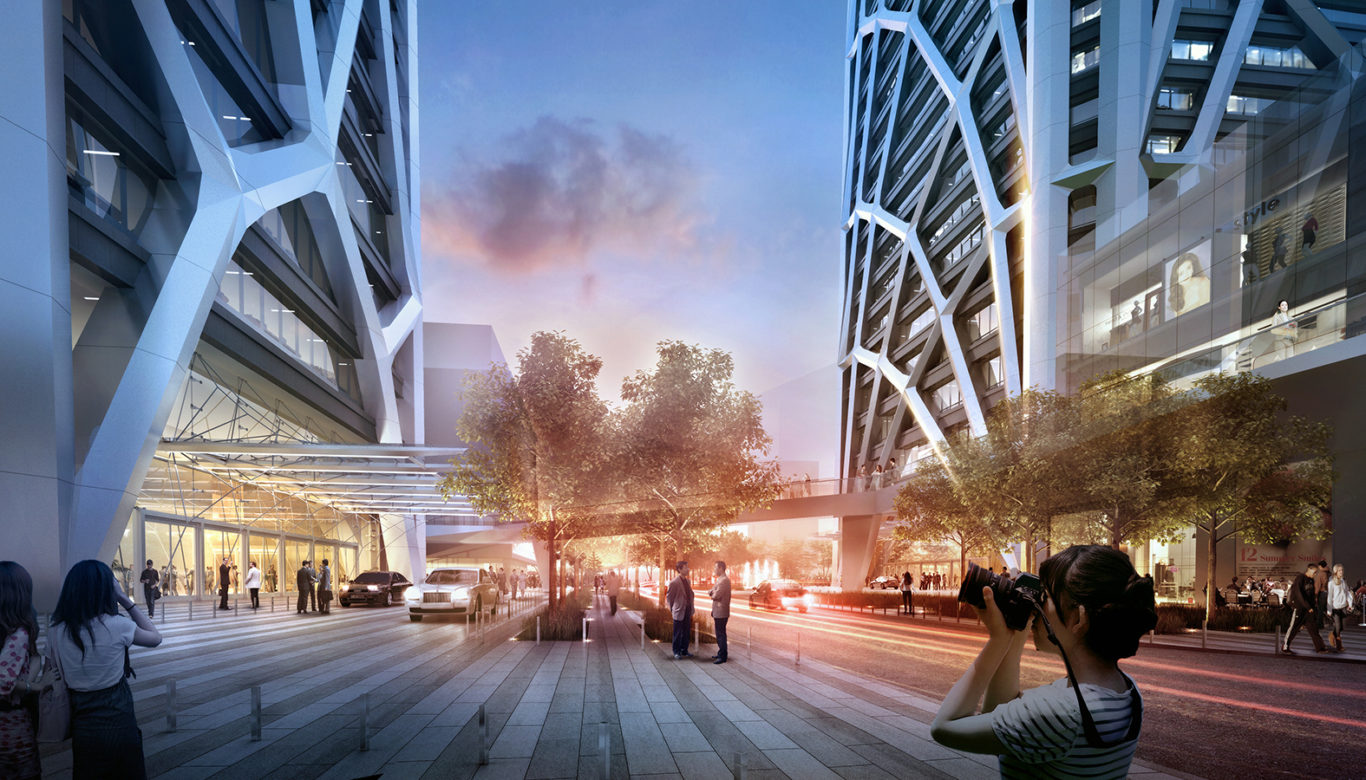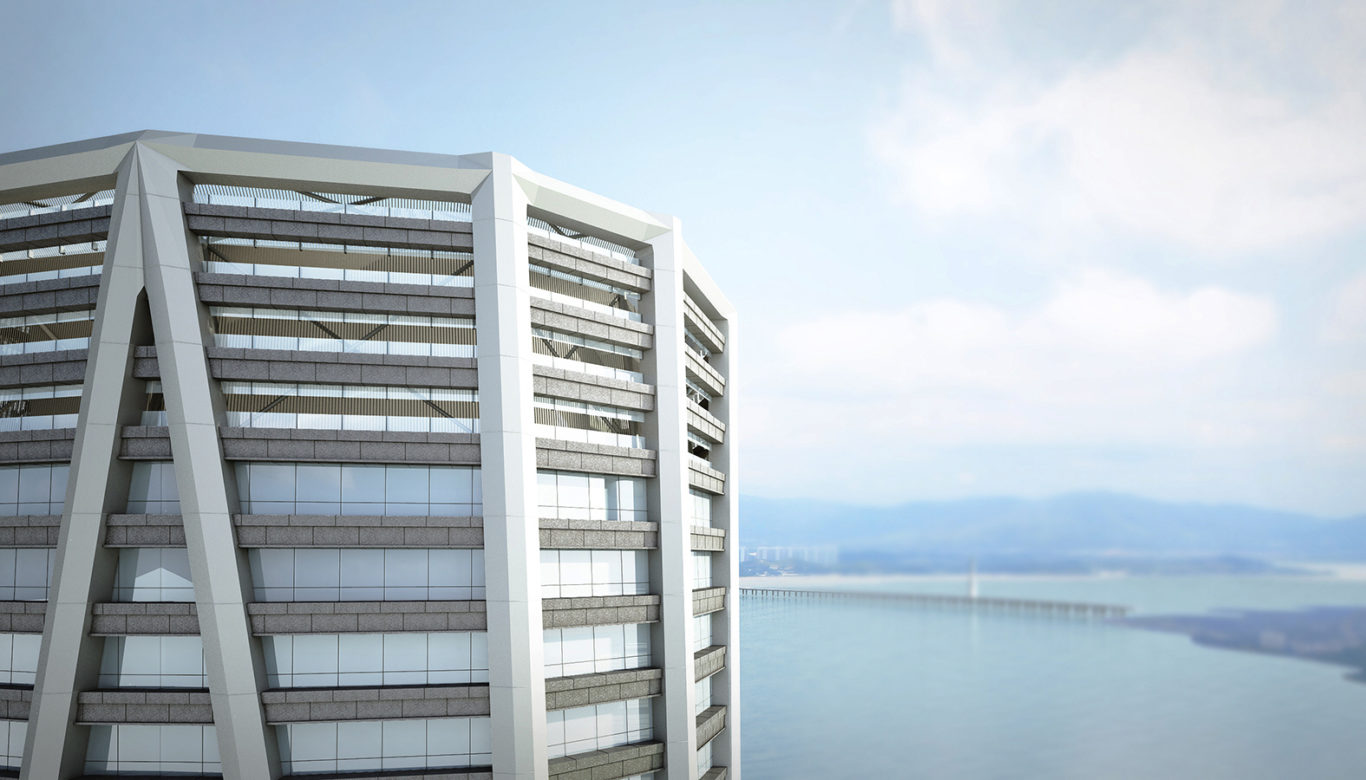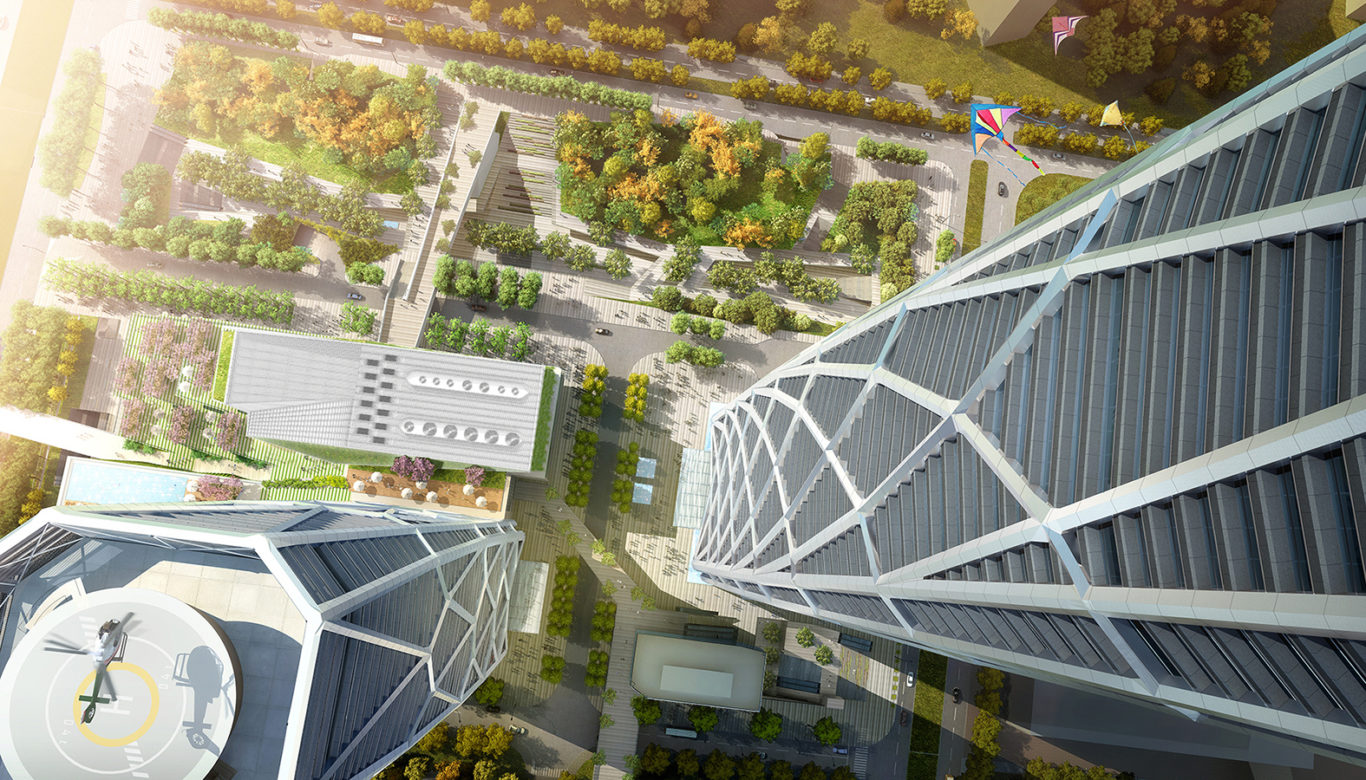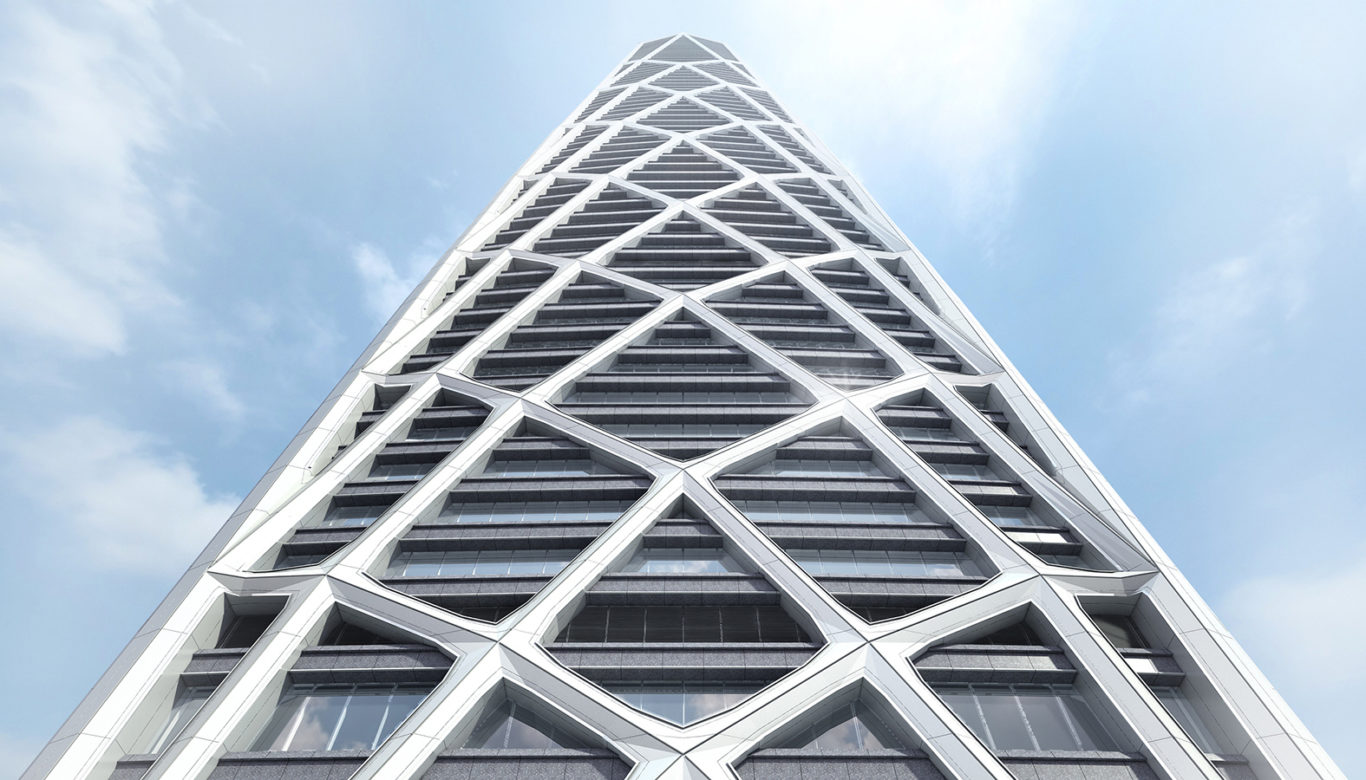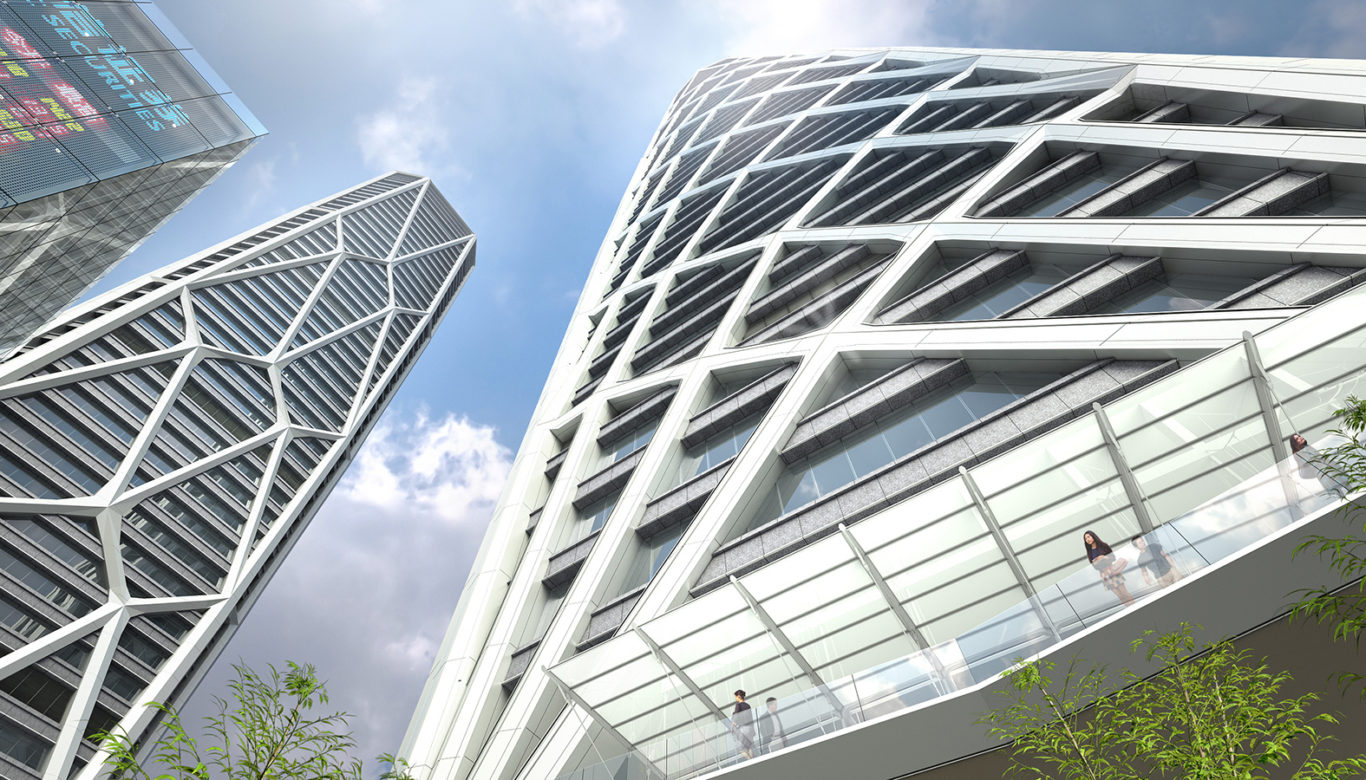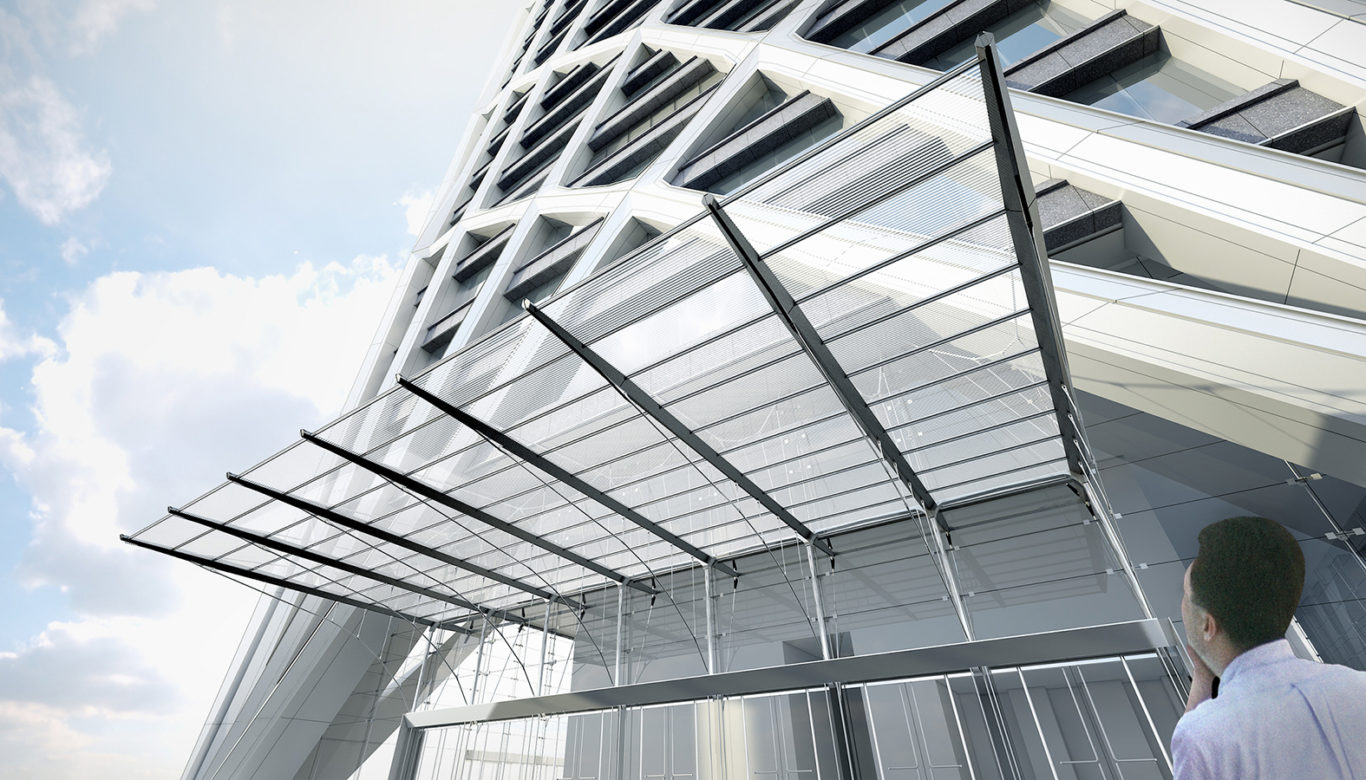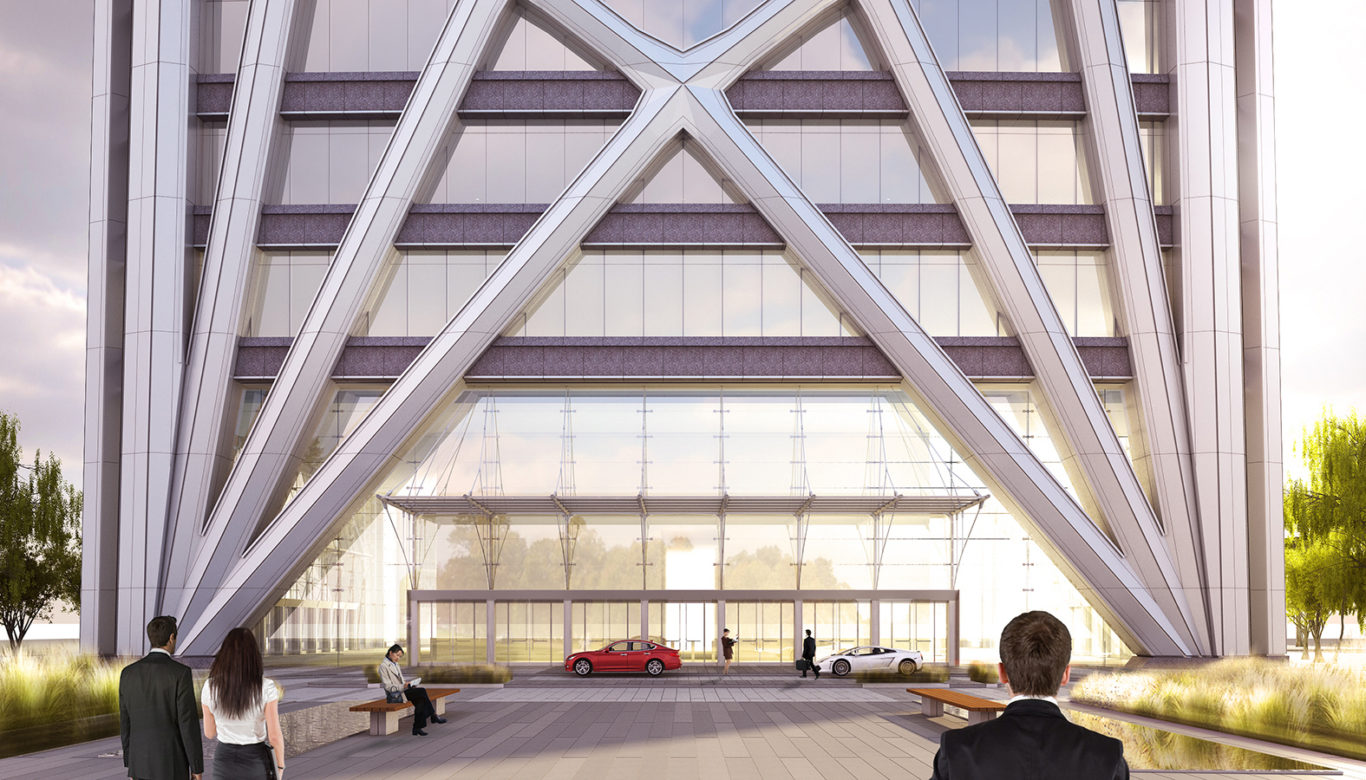CITIC Financial Center creates two iconic, structurally expressive towers that incorporate the world’s most advanced engineering approaches to design.
The multiphase project is located in the Shenzhen Bay Super Headquarter district with unparalleled access to waterfront parks and rapid transit. The design of the Center aspires to form a nexus of public activity by developing new civic, social, and recreational connections. Weaving together a complex mixed-use program, the Financial Center includes a 300-meter tower with luxury condominiums and offices, a 200-meter tower with service apartments and a hotel, and a podium with hotel amenities and retail. Conceived as an extension of the adjacent park, the podium connects indoor and outdoor spaces to create a vibrant, welcoming hub.
Sustainability is a key driver in the design of the Center. Daylight-responsive lighting control, heat recovery, and passive solar ventilation help reduce energy consumption. Condensation collectors harvest water for redistribution to reduce potable water consumption. High-performance glazing, active phytoremediation, and optimized HVAC strategies increase user comfort while providing a healthy interior environment.
The towers’ unique load-responsive structure advances SOM’s research into the potential of optimal exoskeleton truss geometries to achieve radical material efficiencies. The brace geometry of each frame responds to the different structural loads on tall buildings—severe winds at the top and pressure at the bottom—by morphing from bottom to top, creating angle variation over the height of the building. This integrated design solution ensures that the overall structure maximizes stiffness while using the least amount of material for the overall structure.
The project also implements for the first time a structural concept that was invented and patented by SOM—ductile steel links contained within the frames that yield during extreme seismic conditions. This careful marriage of stiffness and flexibility in the design makes for an ideal structural system to handle extreme winds and seismic activity.
